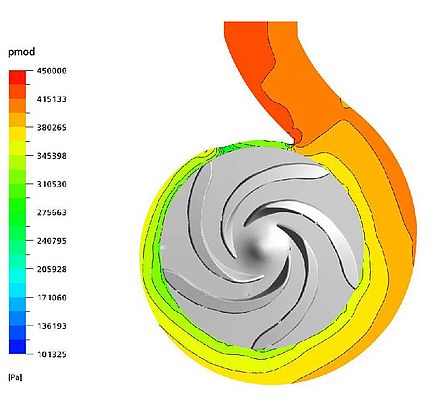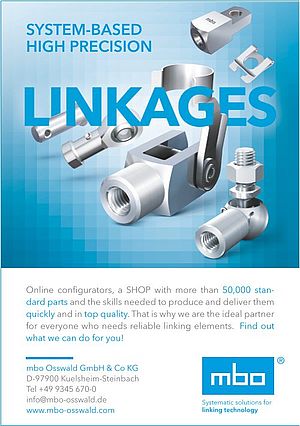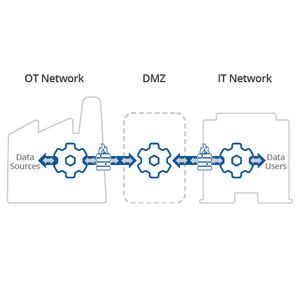Plastic-lined magnetic drive pumps are increasingly being used in the pharmaceutical and chemical industries. It pays to look at the construction details of plastic-lined magnetic drive pumps because not all pumps meet the most stringent requirements. Particularly for handling hazardous materials (HCI, H2SO4, HNO3) and for difficult applications (extreme temperatures and/or pressures, solids content), it is well worth meticulously scrutinizing the product you will want to depend upon.
When the highest quality matters, the wheat separates from the chaff, making it important for the buyer to carefully compare the features of different pumps being considered.
The 7 Most Important Decision-Making Criteria
1) “Not all impellers are alike.”
Centrifugal pump impellers can be open or closed in design. Closed impellers usually provide higher efficiencies than open ones, thereby lowering energy costs and reducing CO2 emissions. In contrast, open impellers are often better suited for handling liquids containing solid particles and normally have lower NPSH values as well. Not all brands offer a choice between closed and open impellers. And having decided on a particular type of impeller for a pump, the user sometimes loses out because, on some brands, it is not possible to fit a different type of impeller in the same pump later on. An efficiency comparison shows that hydraulics with optimised front clearance achieve high efficiencies, even with open impellers.
2) “Not all bearings are alike.”
Since a magnetic drive pump is hermetically sealed to the outside, the conventional sealed pump shaft supported by the external bearing frame is not needed, nor used to support the pump impeller. Instead, the impellers of magnetic drive pumps rotate in bearings which are directly lubricated by the medium being pumped. The bearing, in a certain sense, represents the Achilles heel of all hermetically sealed pumps since it always needs to be lubricated and cooled by the pumped medium. This means that so-called “dry running” represents the greatest danger to hermetically sealed pumps since the absence of fluid or a blockage of the lubrication channels usually will quickly cause damage to the bearing. Because of this, carbon plain bearings are sometimes used, but although these are less sensitive to dry running, they tend to wear out faster due to the low hardness of carbon. Better suited and standard today in high quality plastic-lined pumps are plain bearings made of sintered silicon carbide (SSiC). Anti-friction surface coatings, such as the newly developed FuturaSafe®, can help to reduce damage from dry running.
3) “Not all plastics are alike.”
Chemical resistance, operating temperature, permeation resistance and service life are the criteria to be considered when evaluating plastic materials. Not all plastic materials meet these criteria equally. Perfluoroalkoxy (PFA) generally has the best properties for all criteria. PFA is a fluoropolymer. Due to the inert fluorine atom present in the molecule, PFA is resistant to almost all chemicals and has very high temperature resistance. Pure PFA has no filler or additives and is environmentally neutral and approved for food contact.
4) “Not all linings are alike.”
The lining of plastic-lined pumps provides surface protection against aggressive media, while the outer metal pump casing ensures mechanical strength of the pumps. Ideally, the lining and metal reinforcement are firmly secured to each other in order to achieve the best support and vacuum resistance of the lining. Since high quality fluoropolymers do not bond to the metal casing, they must be mechanically attached to “form-fit” with their support casing. Although special anchorings are more expensive to manufacture, they are best suited to preventing the plastic from pulling out from the casing. In addition to maximising the number of anchorings, their distribution to withstand load stresses is also critical to the quality and service life of the lining and pump.
A vital factor for the quality of the plastic lining is its thickness. The thicker the lining, the more resistant it is to wear and media permeation. However, as the thickness increases, the greater the likelihood that the plastic will “flow” under mechanical stress.
5) “Not all containment shells are alike.”
Special attention needs to be paid to the containment shell of a magnetic drive pump. It isolates the outer, dry part of the magnetic coupling from the inner part in contact with the process fluid, providing one of the major advantages of magnetic drive pumps over mechanical seal pumps: a hermetic seal. In order to maximise the transmission torque of the magnetic coupling, both coupling halves should be located as close together as possible. This means that the (pressure-bearing) containment shell must combine maximum strength with the thinnest possible wall thickness. The containment shell of plastic-lined pumps is usually lined as well. To avoid generating eddy currents that waste energy, the reinforcement of the containment shell is normally not made of metal. Very often, a fibre-reinforced composite is used. For the lining of the containment shell, the same criteria apply as to the rest of the pump lining: thickness and anchoring to the reinforcement are critical for permeation resistance, vacuum resistance and service life.
6) “Not all containment shell monitoring is alike.”
For critical applications, the containment shell of high quality magnetic drive pumps can be constructed in one piece with double walls and the gap monitored for leakage. A particularly effective method is to monitor the pressure in the gap. Damage to one of the isolation shells causes a change in pressure and can be detected early with a pressure sensor. The second isolation shell used for these containment shells serves as a secondary containment shell.
7) “Not all pump shafts are alike.”
Plastic-lined pumps often also use a plastic-coated pump shaft to transmit the torque from the inner magnetic coupling half to the impeller. If the impeller and magnetic rotor are merely screwed to the pump shaft, the impeller may come loose from the shaft and damage the casing when the rotation direction is checked or if the pump is operated in the wrong direction. A common recommendation to secure the screw connection with a screw locking device is unconvincing in high temperatures and, at the least, makes disassembly difficult for maintenance. Particularly well thought-out solutions use polygon-type, positive connections and eliminate the need for critical locking pins or the like.
By CP Pumpen AG. Zofingen/Switzerland





















































